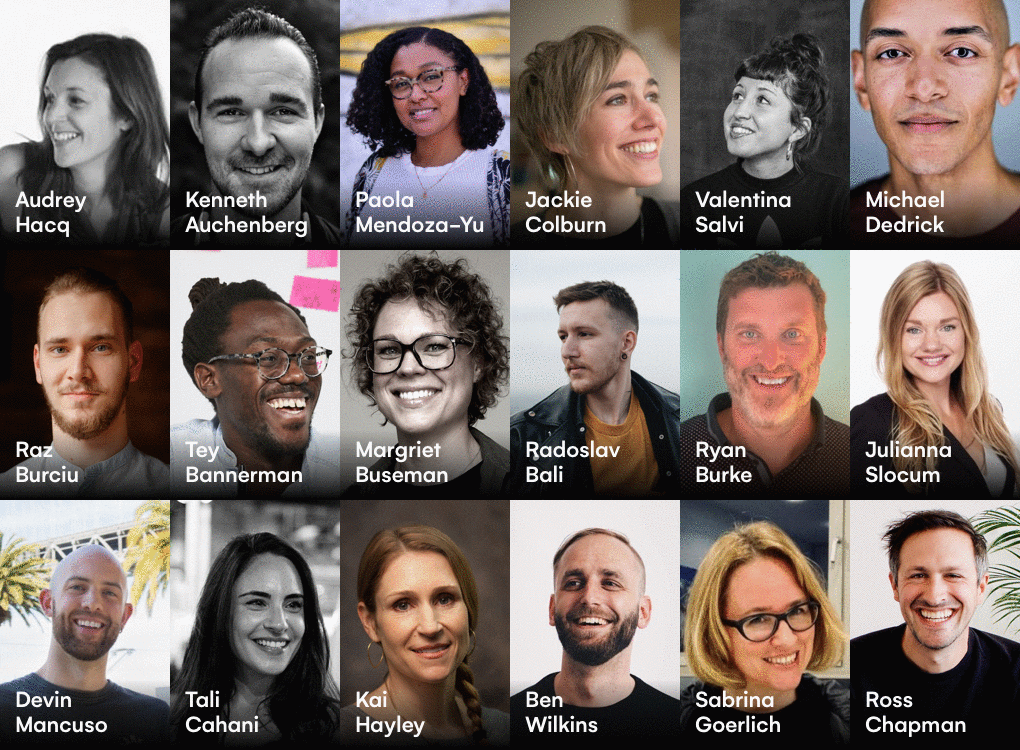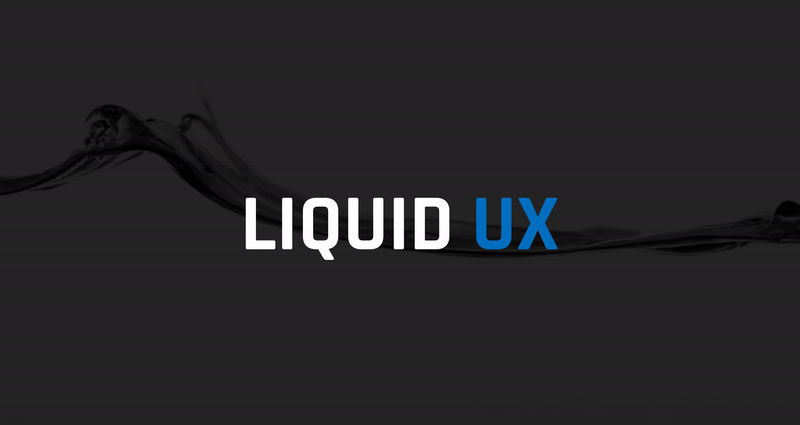This article was written in partnership with our friends at Uizard, the fastest and easiest way to bring your ideas to life.
Welcome to the final part of this 3-part blog series. Today we’ll discuss the future of Design Sprints and the future of design tools. We’ve considered our findings from interviews with esteemed professionals, alongside our vision at Uizard. If you missed part 2, you can read it here.
New design tools have led to significant improvements in the overall daily workflow of designers, saving time and money along the way. However, as the importance of design is becoming increasingly clear for companies around the world, there is still a huge gap between efficient tooling made for designers, and accessible solutions for the rest of the product team.
Creating, designing, prototyping, and testing new ideas is a team effort. So how will tooling evolve to help the entire team reach their goal more efficiently, and how will Design Sprints change?
What do the experts think?
Our experts may not have a crystal ball to look into the future (although it would be pretty neat if they did), but they do have years of experience in the field of UX/UI, Design Sprint facilitation, product design, and marketing—all of which make for a pretty good assumption as to what the world of design could look like in the next 5 to 10 years.

Letter
Design Sprint
We’ve seen through parts 1 and 2 of this blog series how integral the Design Sprint methodology has become. This format has proven to be incredibly useful for product ideation, so it comes as no surprise that the methodology is already being, and will increasingly be, applied to other core parts of businesses.
I think the form of a Design Sprint can be used for many different things. It’s mostly based on new products and services, but it’s already being more applied to, for example, strategy sprints. I see that being developed more. I also see team sprints, where it’s more based on team-building or developing certain skills.
Margriet Buseman, Founder and Design Sprint Facilitator at Orange Minds
How do you create solutions to business problems in your workplace? Do you have multiple meetings with different departments, hoping that one of them will lead to a glimpse of a solution? Or do you hire agencies or consultants to find and fix the problem for you?
This may have been the traditional way to find solutions for many companies, but the future could show us all just how valuable the Design Sprint methodology really is, and just how versatile it has become as a problem-solving instrument.
I would say that the Design Sprint would be one of the methods or frameworks that companies will use for their innovation, for their ideation. I foresee that they will integrate the process as part of their workflow.
Sabrina Goerlich, Innovation Facilitator at Designsprintstudio
Sprints may very well become akin to team-building workshops to kickstart new projects in different core areas of an organization, such as business development, finance, or C-suite strategy.
Pen & Paper
Even though we can expect to see more advanced tooling becoming widely available in the future, sometimes it’s good to stick to the basics. People should work with whatever serves their creativity best, and the prospect of using traditional pen, paper, and sticky notes is still there.
I still think it’s good to use pen & paper because there’s some connection between your hand and your head that you can only achieve with actual sketching.
Tali Cahani, Design Principal and Facilitation Lead at The Co-operative Bank
Sketching has been, and will very likely continue to be, the starting point for a lot of designers to quickly offload new ideas from their brains to the real world. The process of very simply putting pen to paper gives a sense of connection and alignment with the human mind that can’t always be fully replicated through software. There is something enchanting about visualizing an idea in your mind and seeing that portrayed by your own hand on paper—so don’t throw away those notepads just yet, chances are you’ll still need them!
Pen & paper is a really great medium to just get ideas out of your head and somewhere else, maybe in the future we won’t be using that anymore, but I still go to pen & paper to get my ideas down—I look at pen & paper as a tool.
Michael Dedrick, UX Designer at Google
The future of design
One of the key components of the Sprint is to evaluate possible solutions by creating a prototype, a rough mockup of a product to test a concept or process, and measure the results via user testing.
But how do we build these prototypes in such a time-limited context?
This is where the struggle is real…. The majority of teams are using design tools such as Sketch, Adobe XD, or Figma to create their prototypes. These are all amazing products for design but the biggest issue is that they cannot easily be used by everyone in the team. It takes quite a lot of experience and practice to fully master any of these advanced products and there isn’t obviously any time available in the Design Sprint to learn to use a new software.
This matters a lot if you remember the infographic of who is typically involved in a Design Sprint.
Many of these positions are held by individuals who may not have any prior experience using design software. Typically this means that the prototyping phase of the Design Sprint is completely offloaded onto a designer in the team. Apart from the workload and pressure that comes with assigning this onto just one or two people, there are obvious drawbacks.
First of all, how many ideas discussed in a Design Sprint can eventually be turned into testable prototypes if only one person can implement them? Not many… Which means that the team usually needs to heavily filter possible solutions early on, at a time where there isn’t enough data and insights to be 100% sure how to distinguish ‘good ideas’ from bad ones. Distinguishing between the ‘good ideas’ and the ‘bad ones’ would obviously be easier through prototyping and testing so we’re stuck in a chicken-and-egg paradox.
Prototyping in high-fidelity can be very time-consuming because a lot of attention here goes into manually recreating user interfaces in a design editor tool. But how are we certain that the idea we decide to prototype is the best solution? We aren’t. In this phase, it is unlikely that we have enough data.
Radoslav Bali, Lead Designer at Uizard
Second of all, how about communication bottlenecks and loss of information? If the person creating the prototype was not involved in the initial ideation phase, then how can the original intent be successfully implemented in the prototype?
Last but not least, time is of the essence! How can the team get their concepts and ideas into a testable prototype as quickly as possible if tools are too complex for most of them to leverage?
The more time the team dedicates to creating a pixel-perfect prototype, the more attached they get to their idea, and the harder it is to hear negative feedback during the Design Sprint and user testing. Prototyping should be fast!
Kai Haley, Head of UX Methods & Process and Lead of Sprint Master Academy at Google
This is where new technologies come in to lend us a helping hand…
The future of design tools
In today’s world, we have suggestion-based products and apps for almost everything—from Google map route optimization, to suggestions in e-commerce websites and Netflix series. So it comes as no surprise that we should expect to see this concept being integrated into design as well.
Another addition we should expect to see coming into design is assistive technology. Programs for content writing such as Grammarly, or smart calendars already use some forms of assistive technology in their product and there is no question that it does provide a lot of value.
We even have self-driving cars equipped with advanced computer vision that are becoming so advanced they are able to make sense of the chaotic streets of our cities. Perhaps soon similar vision-based technologies will be able to understand the mess of the visual ideas crafted in a Design Sprint, and help guide the creative process.
Augmented reality and virtual reality are slowly making their way into commercially viable solutions, although we still commonly associate these new technologies with gaming. When it comes to digital product design, our current toolset is pretty much limited to the 2-dimensional realm of a flat surface—but imagine if your designs not only captured the ideas held in your mind, but could actually transform before your eyes into a 3-dimensional interactive journey. Perhaps the future of prototyping will be centered around creating life-like journeys that evolve and change with each step the user takes through the prototype, immersing them in a user-testing experience like never before.
I think in the future there will be a lot of use of augmented reality and virtual reality to assist in the design process. Right now designers have an advantage because that’s their strength—to visualise things. Cross-functional partners involved are not able to do that, but they still have great ideas. So somehow, making it possible for them to visualise on the same level as a visual designer in a Sprint, or providing them with some kind of tool that would allow them to use templates or something virtual, would allow them to communicate at the same visual level, and allow you to get the same level of content from everyone in the Sprint.
Michael Dedrick, UX Designer at Google
As we have seen throughout this series, the Design Sprint process is not limited to just designers. On the contrary, stakeholders from diverse backgrounds also bring critical value to the table. Tooling should always be here to support and amplify human creativity, not hinder progress or put artificial roadblocks. We’ve luckily come a long way since the Photoshop era, and design tooling is just getting better by the month.
Software and tooling are getting so much better and as a consequence, designing good products will get easier.
Ben Wilkins, Director of Design at Handshake
New technologies have the potential to lower the barrier of entry to design and truly enable everyone involved in the Design Sprint to bring their ideas to life easily and quickly but also communicate more effectively with the rest of the team.
This is where the demand for more easily accessible and user-friendly prototyping tools stems from, and luckily for us, the future of prototyping is a lot closer than we realise with the introduction of new tools such as Uizard, a collaboration tool powered by computer vision and machine learning able to transform hand-drawn sketches into functional prototypes and code.
I mean, it would be amazing if you could take the hand-drawn sketches and convert them to prototype immediately; that would drastically reduce the amount of time spent. So I could see something like Uizard bringing a huge benefit to the design process.
Jackie Colburn, Co-author of the Remote Design Sprint Guide
The future of design tooling is likely going to be all about democratization by giving everyone in the team the ability to visualize, communicate, and test their ideas quickly and easily. New software will open up a new skill set to those without prior experience in design and reduce friction in communication between designers and the entire product team.
Removing the barriers for designing digital products is going to bring a lot of value.
Ben Wilkins, Director of Design at Handshake
The No-Code Wave
High-fidelity prototyping is increasingly proving valuable for teams to evaluate their solutions after a Design Sprint. When the prototype feels real and the components are fully interactive and functional, user testing suddenly takes another dimension.
I think that the prototyping will get more sophisticated, the prototypes will be high quality and believable. At the moment, prototypes are pretty unintelligent, but soon they will start having real data in them – Adobe XD has started doing this.
Ross Chapman, Head of Design Sprints at Etch Sprints
If we want to implement a mobile app or a website prototype into code after a Design Sprint to run more advanced user testing sessions, chances are we would need to outsource this section of the workflow to a dedicated developer. The truth is, the core value of a software developer is all about engineering a solid final product, and the fast-paced environment of ideation and prototyping is rarely where it makes sense to invest into engineering resources. This may soon be a thing of the past, as new technologies emerge.
The ‘no-code’ wave is incredible. There are agencies being set up where it’s not about having skilled developers at your fingertips, it’s not about having a whole design team; you can pick up a tool or minimal-coding required app, and you can get a concept done very very fast. This area will accelerate, and we’ll start to see a lot more of these innovations.
Ross Chapman, Head of Design Sprints at Etch Sprints
Overall, being able to design, code, and build functional apps and websites prototypes quickly, will be pretty much available to everyone regardless of their level of expertise.
I definitely envision a near future where everyone will be able to code and program—not directly but through AI, machine learning, and no-code / low-code tools.
Kenneth Auchenberg, Product Developer at Stripe
Furthermore, it is becoming more and more common for teams to shortcut lengthy development processes during the prototyping phase by using pre-coded components taken from older projects or from their design system—should they have one in place.
The very reason for the rise of the design system movement is precisely because of its promise to enable the entire product team to use and reuse a set of well-defined coded components. Product teams shouldn’t have to reinvent the wheel by redesigning and reimplementing that same old login screen over and over again. They should be able to pick the latest version of that component, and just use it.
One thing I see in the future of design, is design tools in which we can manipulate coded components, instead of shapes and pixels. Designers will be able to directly prototype with components to visualize their ideas in high-fidelity.
Audrey Hacq, Head of Product Design at OpenClassrooms
Conclusion
As we have seen, new tools are going to significantly help speed up the design process.
Thanks to new technologies, we will be able to bring our ideas to life faster than ever before!
This means that teams will waste less time on repetitive time-consuming tasks, and can spend more time on more unique, value-creating tasks.
One thing we can look forward to in the future is the ability to design beautiful high-fidelity prototypes featuring actual business data faster than it would take us to build low-fidelity prototypes today. With the amount of time and resources saved in the ideation phase, companies will be able to innovate faster, iterate more, spend more time in user testing, and ultimately create better solutions for their customers.
Of course, this is just our take on what could be available in the next 5-10 years… With technology breakthroughs accelerating at such a high pace, the design products of tomorrow are likely going to be even more advanced than what we can imagine today!
Interviewees
This 3-part blog series was created using the insights and thoughts from the following people:
- Ryan Burke | Former Senior Vice President at InVision
- Kai Haley | Head of UX Methods & Process and Lead of Sprint Master Academy at Google
- Paola Mendoza-Yu | Principal UX Designer at GoGuardian
- Valentina Salvi | Senior Service Designer at Accenture Interactive Amsterdam
- Audrey Hacq | Head of Product Design at OpenClassrooms
- Ross Chapman | Head of Design Sprints at Etch Sprints
- Raz Burciu | Co-Founder and Product Designer at Just Mad
- Ben Wilkins | Director of Design at Handshake
- Kenneth Auchenberg | Product Developer at Stripe
- Jackie Colburn | Co-author of The Remote Design Sprint Guide
- Devin Mancuso | Design Strategist at Google
- Tali Cahani | Design Principal and Facilitation Lead at The Co-operative Bank
- Margriet Buseman | Founder and Design Sprint Facilitator at Orange Minds
- Radoslav Bali | Lead Designer at Uizard
- Tey Bannerman | Design Director at McKinsey & Company
- Michael Dedrick | UX Designer at Google
- Sabrina Goerlich | Innovation Facilitator at Designsprintstudio
- Julianna Slocum | Staff UX Designer at LinkedIn
Thank you all for your contribution. 🙏




